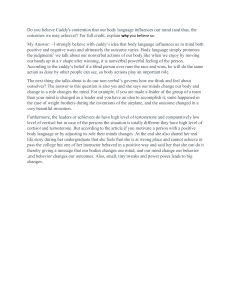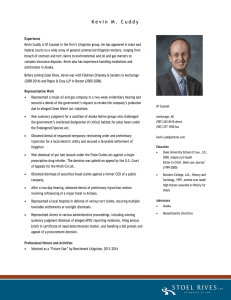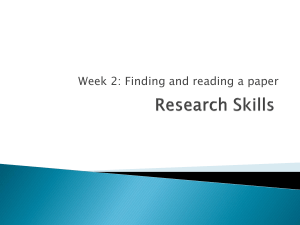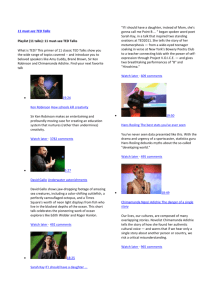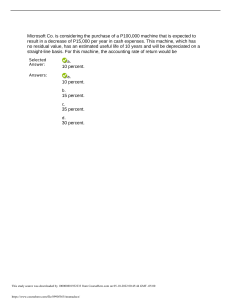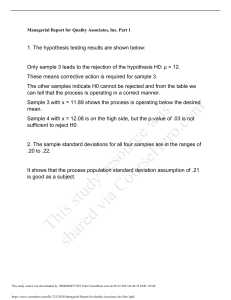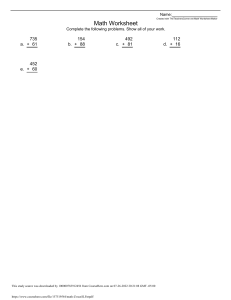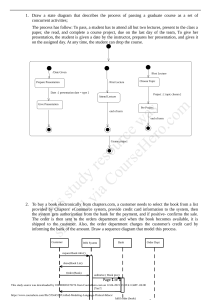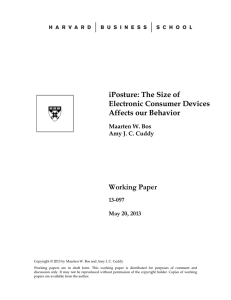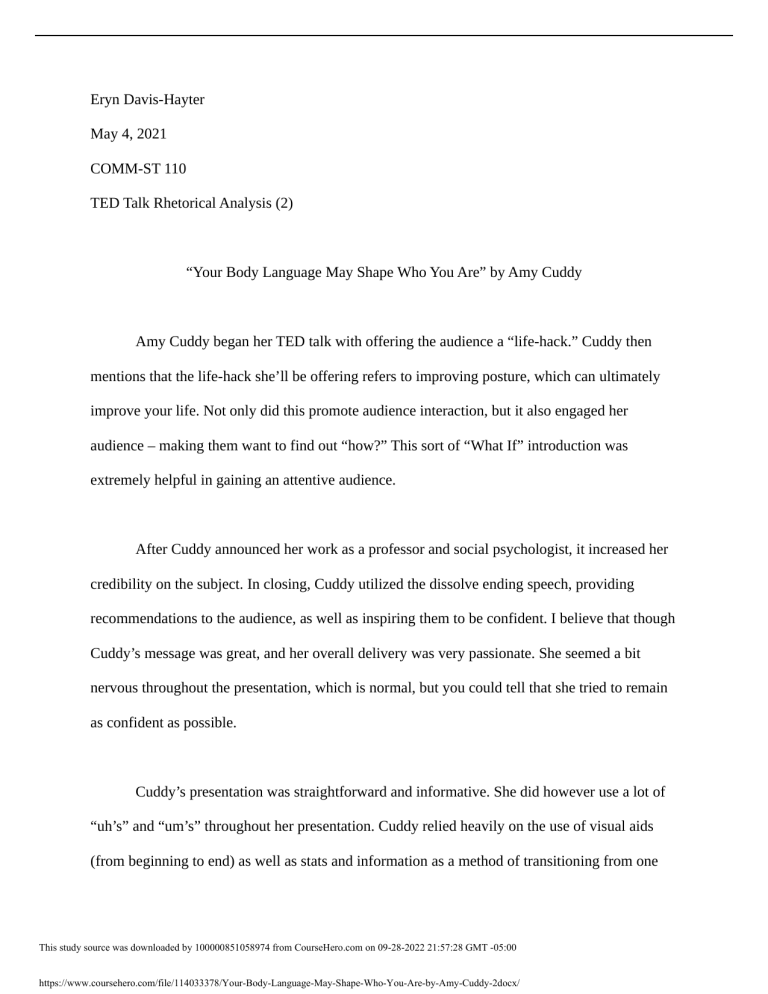
Eryn Davis-Hayter May 4, 2021 COMM-ST 110 TED Talk Rhetorical Analysis (2) “Your Body Language May Shape Who You Are” by Amy Cuddy Amy Cuddy began her TED talk with offering the audience a “life-hack.” Cuddy then mentions that the life-hack she’ll be offering refers to improving posture, which can ultimately improve your life. Not only did this promote audience interaction, but it also engaged her audience – making them want to find out “how?” This sort of “What If” introduction was extremely helpful in gaining an attentive audience. After Cuddy announced her work as a professor and social psychologist, it increased her credibility on the subject. In closing, Cuddy utilized the dissolve ending speech, providing recommendations to the audience, as well as inspiring them to be confident. I believe that though Cuddy’s message was great, and her overall delivery was very passionate. She seemed a bit nervous throughout the presentation, which is normal, but you could tell that she tried to remain as confident as possible. Cuddy’s presentation was straightforward and informative. She did however use a lot of “uh’s” and “um’s” throughout her presentation. Cuddy relied heavily on the use of visual aids (from beginning to end) as well as stats and information as a method of transitioning from one This study source was downloaded by 100000851058974 from CourseHero.com on 09-28-2022 21:57:28 GMT -05:00 https://www.coursehero.com/file/114033378/Your-Body-Language-May-Shape-Who-You-Are-by-Amy-Cuddy-2docx/ topic to the next (which is not necessarily a bad thing.) She did a good job of making the audience laugh, storytelling and keeping the audience engaged. Amy Cuddy’s central idea was that by engaging in “power poses” and “faking it until we become it,” we can change the way we think about ourselves and how others see us. She explains that non-verbal movements also have an effect on how we feel we are received, how we act and how we process things. Though most of us lack self-confidence, it is important to change that in order to “take up space.” Cuddy used her own experiences as evidence that her method actually works. In her presentation, Cuddy used multiple, quality oral citations that helped reinforce her central idea. Cuddy cited Marianne LaFrance’s "standing in social quicksand," Nalini Ambady’s analysis of physician-patient interactions, Alex Todorov’s judgments of political candidates' faces and Jessica Tracy’s study of sighted vs blind people’s reactions to winning physical competitions. I liked this presentation because it was informative and straightforward. I also think it’s great that Cuddy included a video in her presentation. There was actual retainable information that can be useful in the future. Two things I learned from this presentation are that (1) our body language is directly affected by what we’re thinking or feeling and that (2) by changing our body language, we can boost our self-confidence. In future presentations, I suggest that Cuddy work on pauses as opposed to saying “uh” and “um.” Regardless, I believe Cuddy did well. This study source was downloaded by 100000851058974 from CourseHero.com on 09-28-2022 21:57:28 GMT -05:00 https://www.coursehero.com/file/114033378/Your-Body-Language-May-Shape-Who-You-Are-by-Amy-Cuddy-2docx/ Powered by TCPDF (www.tcpdf.org)
